Moses was born on the 7th of Adar of the year 2368 from creation (1393 BCE); accordingly, Adar 14 was the 8th day of his life and the day on which he was circumcised in accordance with the Divine command to Abraham.
The festival of Purim celebrates the salvation of the Jewish people from Haman's plot "to destroy, kill and annihilate all the Jews, young and old, infants and women, in a single day."
The events of Purim extended over a period of several years, culminating in the victory celebrations of Adar 14-15 of 356 BCE. Below is a timeline of the major events. For the detailed story, see the Book of Esther and The Story of Purim
|
Event |
Date | |
|
Achashveirosh ascends the throne of Persia |
369 BCE | |
Achashveirosh's 180-day feast; Queen Vashti executed |
366 BCE | |
Esther becomes queen |
Tevet, 362 BCE | |
Haman casts lots to choose date for Jews' annihilation |
Nissan, 357 BCE | |
Royal decree ordering killing of all Jews |
Nissan 13, 357 BCE | |
Mordechai calls on Jews to repent; 3-day fast ordered by Esther |
Nissan 14-16, 357 BCE | |
Esther goes to Achashveirosh; hosts 1st wine party with Achashveirosh and Haman |
Nissan 16, 357 BCE | |
Esther's 2nd wine party; Haman's downfall and hanging |
Nissan 17, 357 BCE | |
|
Second decree issued by Achashveirosh, empowering the Jews to defend themselves |
Sivan 23, 357 BCE | |
|
Battles fought throughout the empire against those seeking to kill the Jews; Haman's ten sons killed |
Adar 13, 356 BCE | |
|
Purim celebrations everywhere, except Shushan where 2nd day of battles are fought |
Adar 14, 356 BCE | |
|
Purim celebration in Shushan |
Adar 15, 356 BCE | |
|
Megillah written by Esther and Mordechai; Festival of Purim instituted for all generations |
355 BCE |
On August 2, 1990, the Iraqi army under Saddam Hussein occupied Kuwait. After five weeks of heavy fighting, coalition forces succeeded in liberating Kuwait, and a ceasefire was declared on February 28, 1991, corresponding to the holiday of Purim.
Despite threats from Saddam to bombard Israel with chemical warheads, the Lubavitcher Rebbe, R. Menachem Mendel Schneerson, stated unequivocally that “the Land of Israel is the safest place in the world,” and predicted that the war would be over by Purim.
Links: I Will Show You Wonders; Purim Saddam; End the War Now!
Purim observances include:
a) Reading of the Megillah (Book of Esther), which recounts the story of the Purim miracle.
b) Giving to the poor (gifts of money should be given to at least two poor people).
c) Sending gifts of food to friends (a minimum of two read-to-eat foods to at least one friend).
d) The Purim feast.
e) Reciting the Al Hanissim prayer.
Customs include dressing up in disguising costumes and the traditional Purim food, the hamantash. For more detailed information, see links below.
When Purim falls on Friday -- as it does this year -- all of the above should be done before Shabbat begins, 18 minutes before sunset.
In Jerusalem and other ancient walled cities, the festival would normally be observed tomorrow Adar 15th. Because this year Adar 15 is on Shabbat, the festivals observances are spread over a three day period. The megillah is read today, and the gifts to the poor are also given. Al Hanissim is recited only on Shabbat, and the sending of food to friends and the Purim meal are done on Sunday. All three days are days of joy ansd celebration. This phenomenon is known as "The Triple Purim."
Virtual Purim (a website offering the story of Purim, detailed How-To's, articles and essays, Purim songs and videos, and a global Purim event directory).
A special Purim site for kids
The book of Esther with commentary.
A Purim anthology
There are forty-nine gates of human understanding. The fiftieth gate is entirely beyond any living being.
It is so high that, looking down from there, all things are equally nothing. There is no good, no evil, nothing can be added or taken away, the righteous are dust, the wicked are dust, nothing is of consequence, all is but dust.
That is why Haman erected a gallows fifty cubits high upon which to hang Mordechai. To say: G-d does not care. He is beyond all these things. There is no good or evil, it is all a fiction of the petty human mind.
Drunk with the joy of Purim, a Jew soars higher and yet higher until he reaches that gate. Upon entering, the Jew defiantly proclaims that the oppressed must be saved, the wicked overthrown, and light, joy, happiness, and peace must rule throughout the universe.
“As for this high place,” the Jew declares, “I am not impressed. It too was created for the purpose of our joy below!”
Yes, it is true that the higher you go, the less things matter. So why does anything at all exist?
Because an infinite, can-do-anything God chose that it should exist with joy, with love, and with goodness. He chose light over darkness, good over evil, liberty over oppression, the joy of Purim over the evil machinations of a powerful megalomaniac.
He chose, and that choice became the very fabric out of which this universe was formed, the theme of every story it tells, the meaning of every life, the message of every mitzvah we do.
Its secret exposed, the fiftieth gate itself is redeemed. It, too, has served its purpose.
So that, in the end, Haman was hanged on his own gallows, fifty cubits high.
